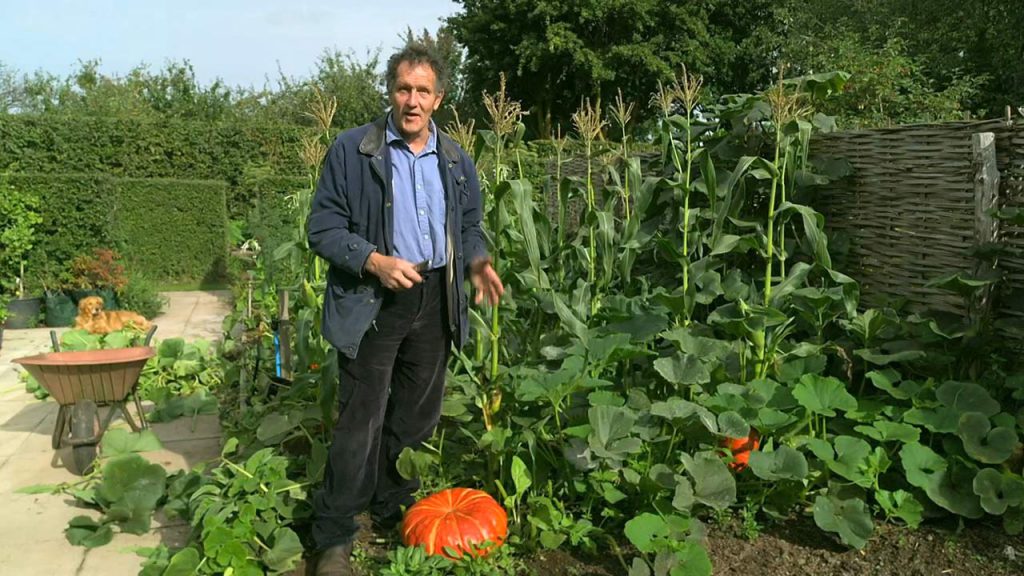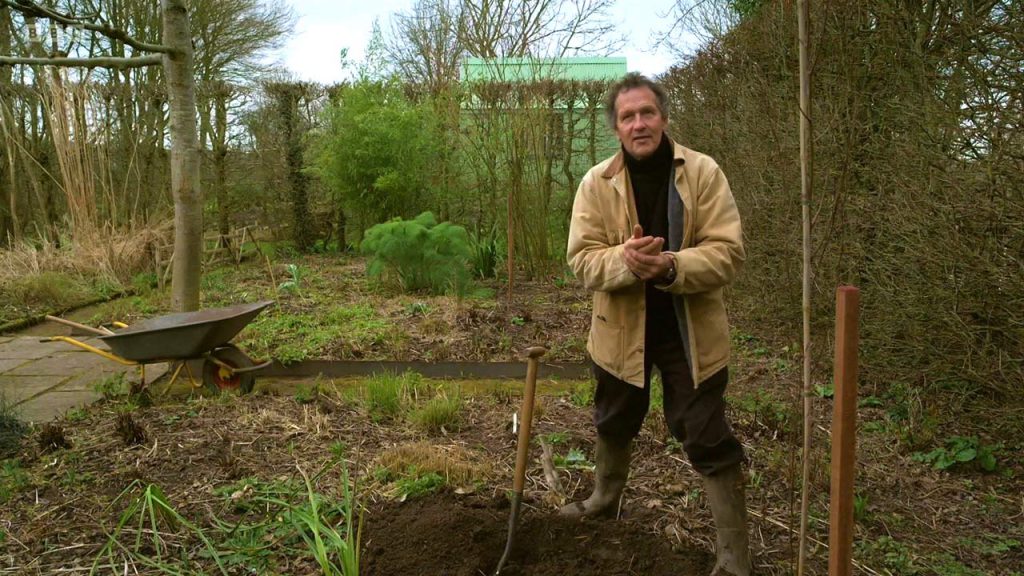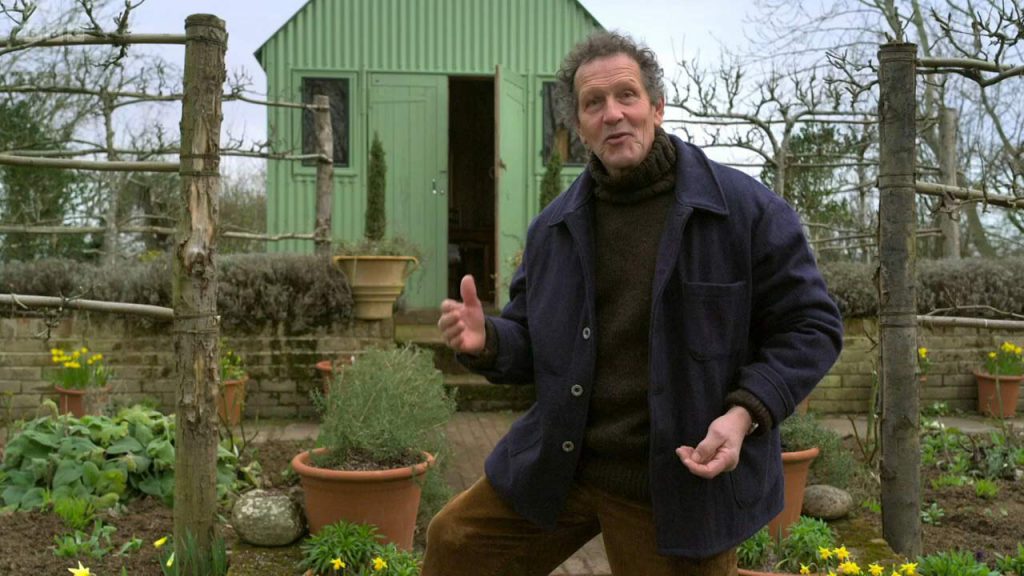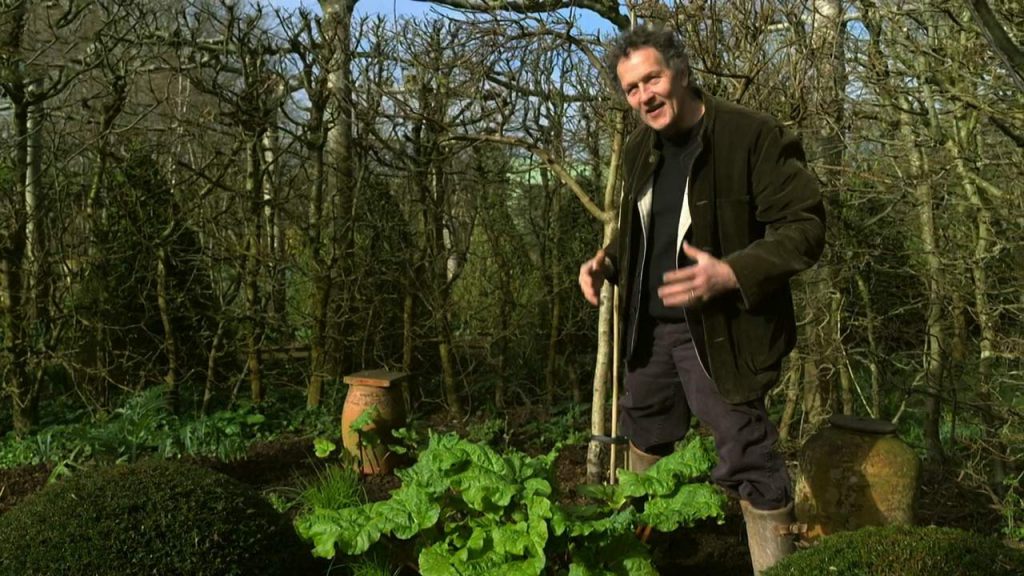In Gardeners’ World 2022 episode 27: Monty Don is back with more gardening wisdom, starting with the planting of garlic, an essential for any kitchen garden. He also demonstrates how to divide crocosmia, a vibrant perennial, ensuring it continues to flourish and spread beautifully. Additionally, Monty sows ornamental grass seeds, adding texture and movement to the garden landscape, and offers tips on how to successfully grow these elegant grasses.
Adam Frost takes viewers on a fascinating journey to Lowther Castle in the Lake District, where he delves into the extensive garden restoration project underway. This segment highlights the historical significance and the meticulous efforts involved in bringing the gardens back to their former glory. Adam’s visit provides a behind-the-scenes look at the restoration process and offers inspiration for those interested in garden history and large-scale horticultural projects.
In Devon, Toby Buckland meets an inspiring gardener who has lovingly created and nurtured her garden over the past sixty years. Her dedication and passion are evident in the thriving plants and well-tended borders, showcasing the rewards of a lifelong commitment to gardening. Toby’s interview with this seasoned gardener provides valuable insights and a touching reminder of the enduring joy that gardening can bring.
Meanwhile, in Cheshire, a dahlia enthusiast shares her unique approach to drying her blooms, allowing her to enjoy their beauty year-round. This segment explores the art of preserving flowers and offers practical advice for gardeners looking to try their hand at drying their own blooms.
Bristol features a garden where wildlife takes center stage, emphasizing the importance of creating habitats that support local fauna. This wildlife-friendly garden demonstrates how thoughtful planting and garden management can create a haven for birds, insects, and other creatures, contributing to biodiversity and environmental health.
Across the country, Gardeners’ World presenters, broadcasting from their own gardens and homes, share their extensive knowledge and practical advice. They cover a range of topics, from creating depth in small backyard gardens to making the most of a spinach crop by turning it into homemade pesto. These segments highlight the endless possibilities available to gardeners, regardless of garden size or experience level.
For further inspiration, the show features tips and suggestions from professionals, horticulturists, and passionate hobby gardeners. Whether you are a novice or an experienced gardener, this episode offers a wealth of information to help you get the most out of your garden. From planting and propagation techniques to creative design ideas and sustainable practices, Gardeners’ World 2022 episode 27 is packed with content to inspire and educate every green-fingered enthusiast.
Gardeners’ World 2022 episode 27
Garlic
A member of the onion family, this staple of Mediterranean cooking is simple to grow in a warm sunny site with well-drained soil. It is grown from cloves, which are best planted in late autumn, and is ready to harvest the following summer. Garlic is grown by planting individual cloves of garlic (rather than sowing seeds), usually in autumn – see Plant, below, for full details. Garlic is generally trouble free and needs little maintenance, apart from watering in dry spells, and regular weeding. Also snip off any flower stems that start to form.
Water garlic during dry spells in spring and early summer, to improve bulb size. However, don’t water once the bulbs are large and well formed, as this could encourage rotting. Yellowing foliage is a sign that the bulbs are reaching this stage of maturity. Try to avoid overhead watering, as it can encourage fungal diseases.
Garlic plants need full sun, so keep weeds at bay to ensure plants don’t get shaded. Weeding is best done by hand, as hoeing risks damaging the developing bulbs. To avoid the need to weed regularly, consider planting through black plastic sheeting or weed-suppressing membrane.
Prior to planting, remove any weeds then improve the soil’s structure, moisture retention and nutrient levels by digging in organic matter. Apply about two bucketfuls of well-rotted manure or garden compost every square metre/yard. Avoid using fresh manure. Little fertiliser is required at planting. On average soil, apply a general-purpose fertiliser at a rate of 25g/1oz per square metre/yard. Where organic matter was not applied, double the amount of fertiliser. To reduce the need for weeding later, you could cover the soil with black plastic sheeting or weed-suppressing membrane, then plant the cloves through slits.
Carefully break up the bulbs into individual cloves or segments. Take care to plant them the right way up, with the flat basal plate facing downwards and the pointed end upwards.
Space the cloves 15cm (6in) apart, with the tip 2.5cm (1in) below the soil surface. In light soil, deeper planting can produce larger bulbs, but don’t plant deeply in heavy soil. Space rows 30cm (1ft) apart. Prevent birds from pulling up newly planted cloves by covering with horticultural fleece until well rooted in.
Crocosmia
Crocosmias are multi-flowered perennials that come in a range of fiery colours. Easy to grow, they thrive in a range of soil types, in sun or partial shade. Plant with dahlias, salvias and cannas for a sumptuous mid- to late-summer display.
From clumps of sword-like or pleated leaves, upright, arching stems carry small, funnel-shaped flowers that open in succession. Most are orange, but there are also yellow- and red-flowered cultivars. Some have bronze-tinted foliage. Crocosmias grow well in most soil types, but do best in soil that retains some moisture in summer. They prefer full sun, but also tolerate dappled or light shade. Growth may be stunted in very dry soil. They won’t flower well in deep shade.
Some crocosmias can become invasive. Common montbretia (Crocosmia × crocosmiiflora) has ‘escaped’ from gardens into the wild, where it can crowd out more delicate native species. So it’s best not to grow it if your garden adjoins open countryside. To avoid spreading it in your garden, don’t compost unwanted plants.




